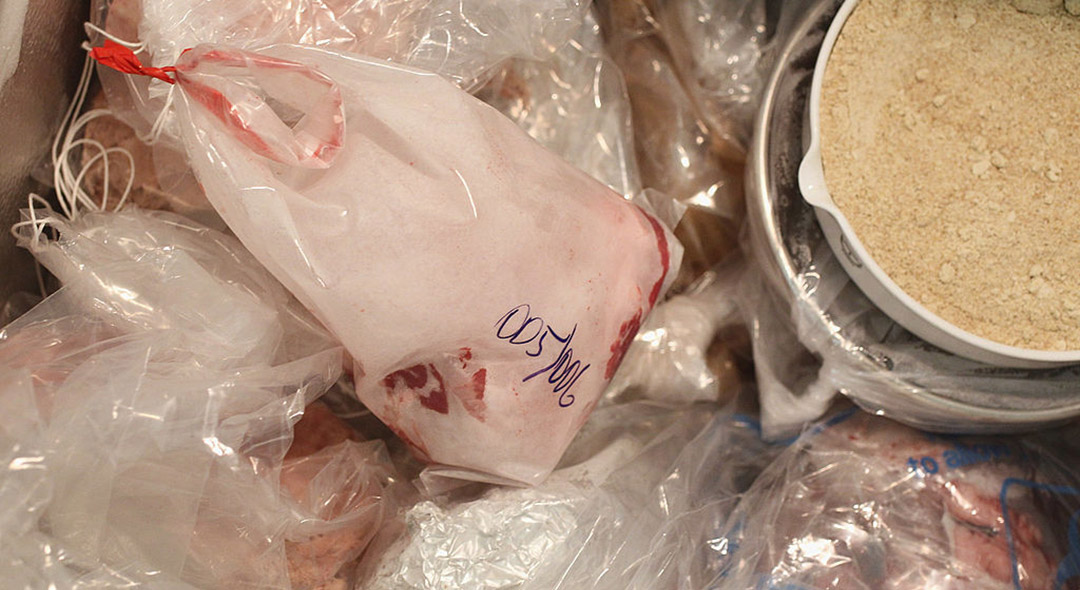Food safety
Large-scale food production requires strict hygiene practices and the use of foodstuffs which pose no health risk to consumers. The contamination of industrial food products can have serious consequences. Many countries implement a legislative framework of risk management to ensure food safety. Furthermore, the work carried out by scientific institutes is invaluable for assessing hazards and preventing risks.
The need for safe food
For a long time, food safety was linked with food shortage and undernourishment. From the latter half of the 20th century however, it was seen from a different angle, that of safety in terms of the quality of food, to safeguard consumer health. The connection between health and food has transcended the ages: The Middle Ages saw the need for regulations against adulterated wine; Louis Pasteur’s work in 1863 focused on diseases of wine, highlighting the risk of microorganisms as pathogens. This led him to discover pasteurisation.
Mass production and the globalisation of trade since the 1960s have created a long and complicated pathway for human and animal food. Contamination can occur at any stage of food production, processing and distribution. It can have far-reaching repercussions, sometimes even on a global scale. Consumer health must be protected against risks throughout the food chain, from ‘plough to plate’ and from ‘stable to table’.
Risks
Food safety covers any risk that could make food harmful to consumer health. The WHO estimates that, every year, 600 million people (one in every ten people in the world) fall ill from eating contaminated food, and that 420 000 die as a result of this.
Bacteria, parasites and viruses can cause many diseases. Salmonella is among the most widespread and possibly lethal forms of contamination. It is generally transmitted through food of animal origin, such as raw meat, eggs and milk. Chemical substances, such as pesticides used inappropriately, as well as heavy metals and the dioxin found in animal feed, can cause acute or chronic diseases (damage to the immune system, allergies, cancer, etc).
Food adulteration, for example of milk, spices and oils, is a recurrent practice, which can also pose significant health risks. Finally, technical risks, such as a foreign body in food, or a kink in the cold chain, may sometimes occur as food is being processed, transported or stored.
Controls
Today, the Codex Alimentarius Commission (CAC) plays a leading role in the joint FAO/WHO food and nutrition standards programme and serves as an international benchmark to guarantee food safety, and assess and prevent hazards throughout the food chain. These standards cover, for example, food hygiene, the maximum levels of food additives, labelling, and residue from pesticides and veterinary drugs. The World Health Organisation (WHO) invites every country to put these standards into practise and strengthen their safety system.
Many states have therefore tightened up their legislation and strengthened government services to ensure food safety among all stakeholders, from producers to street vendors. Control systems and inspections have been put in place and specialist laboratory services also play a key role in prevention and control.
FAO/OMS, 2003. « Garantir la sécurité sanitaire et la qualité des aliments »
www.fao.org/docrep/006/y8705f/y8705f09.htm, consulté le 5 décembre 2016
FAO/OMS, 2007. « Les systèmes nationaux de sécurité sanitaire des aliments doivent être améliorés »
www.un.org/apps/newsFr/storyF.asp?NewsID=14483&Cr=aliments&Cr1=FAO, consulté le 3 décembre 2016
OMS, 2013. « Infections à Salmonella (non typiques) »,
www.who.int/mediacentre/factsheets/fs139/fr/, consulté le 5 décembre 2016
OMS , 2015. Sécurité sanitaire des aliments
www.who.int/topics/food_safety/fr/, consulté le 5 décembre 2016
LAFFORGE, Laurence, RAFFI, Rémy, « Droit de l’alimentation » in Poulain, Jean-Pierre (sous la direction de), 2012, Dictionnaire des cultures alimentaires, Paris : PUF, pp.408-415
Rastoin, Jean-Louis, Gérard Ghersi, 2010, Le système alimentaire mondial, Versailles : Editions Quae
SCHILTER, Benoît, PETERZ, Mats, CONSTABLE, Anne, 2009, « L’évaluation du risque au service de la sécurité alimentaire »,285-290, Zanier, Sonia, « Sécurité sanitaire des aliments : entre réalité et représentation », pp. 281-284, 2009, in Recherche et alimentation en dialogue, Vevey : Alimentarium.








